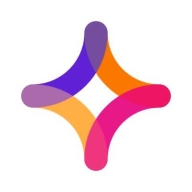

Jitterbit Harmony and Flowgear are competing products in the integration platform space. Jitterbit Harmony holds an advantage in pricing and support; however, Flowgear's extensive features make it a strong contender worth the investment.
Features: Jitterbit Harmony offers advanced data transformation capabilities, seamless connectivity, and efficient data mapping. Flowgear provides extensive pre-built connectors, a no-code visual front end, and rapid integration tools, enabling users to quickly establish connections with various systems.
Room for Improvement: Jitterbit Harmony could enhance its feature set by offering more pre-built connectors and increasing customization options. Flowgear may benefit from improved customer support, easier onboarding processes, and more competitive pricing structures.
Ease of Deployment and Customer Service: Jitterbit Harmony offers a straightforward deployment with comprehensive support, ensuring smooth business transitions. Flowgear provides a cloud-based model with minimal setup requirements, although its customer service is less emphasized.
Pricing and ROI: Jitterbit Harmony is recognized for its competitive initial cost and promises quicker ROI through refined support services. Flowgear requires a higher initial investment but its extensive features and flexibility often justify the expense over time.


Flowgear enables companies of all sizes to increase efficiency and reduce cost by integrating their apps, services, API’s and databases. No coding with 200+ pre-built connectors, reusable workflows and APIs.
Jitterbit Harmony is a comprehensive platform for data integration and API management, enabling seamless synchronization and automation across cloud-based and on-premises applications.
Users leverage Jitterbit Harmony to integrate systems like ERP and CRM applications, simplifying complex data workflows and enhancing automation. It supports efficient data migration and ensures smooth connectivity, handling diverse integration needs and helping streamline business processes. Users emphasize its drag-and-drop functionality and extensive templates, which contribute to its robust performance. However, improvements are needed in data mapping, error message clarity, and documentation, especially when dealing with large data volumes.
What are the key features of Jitterbit Harmony?Companies across retail, manufacturing, healthcare, and finance sectors use Jitterbit Harmony to integrate critical applications and automate workflows. In retail, it connects inventory systems with sales platforms, reducing manual effort. Manufacturers sync their ERP systems with supply chain software, optimizing operations. Healthcare organizations integrate patient management systems with insurance databases, streamlining patient care. Financial institutions use it to connect accounting software with banking systems, ensuring real-time financial data exchange.
We monitor all Integration Platform as a Service (iPaaS) reviews to prevent fraudulent reviews and keep review quality high. We do not post reviews by company employees or direct competitors. We validate each review for authenticity via cross-reference with LinkedIn, and personal follow-up with the reviewer when necessary.